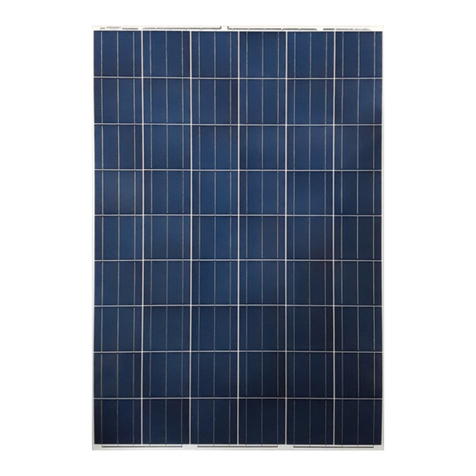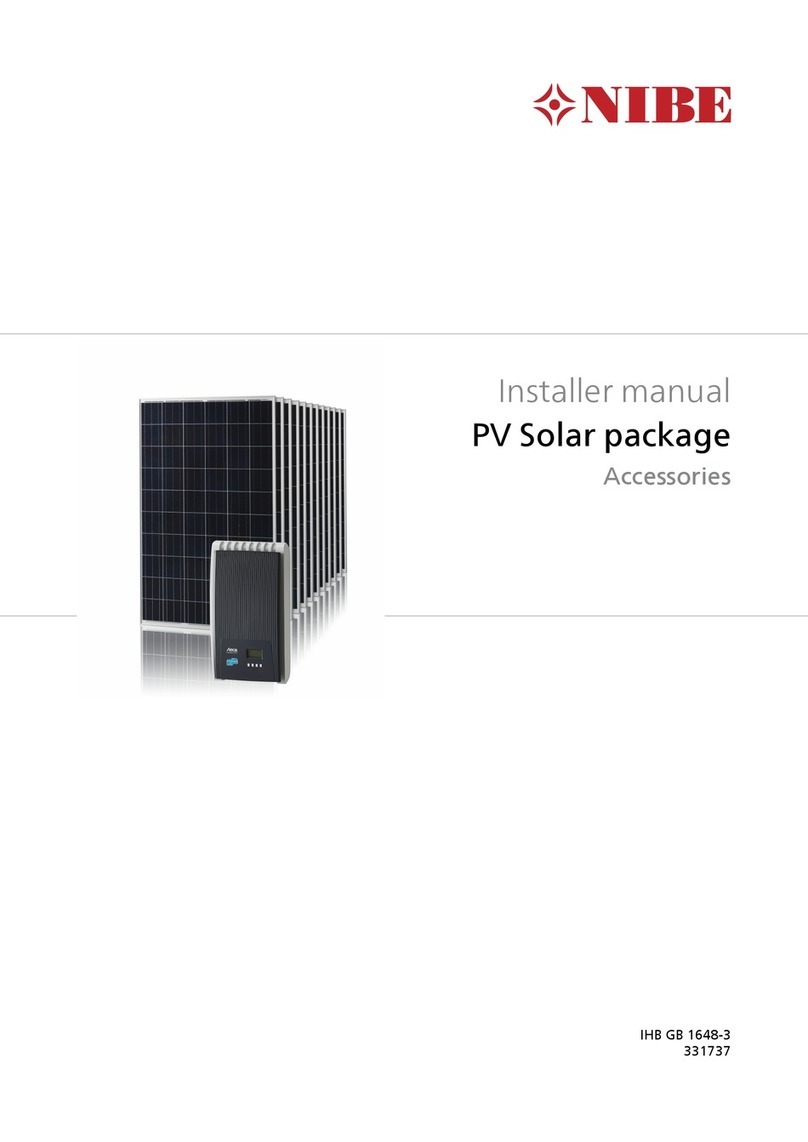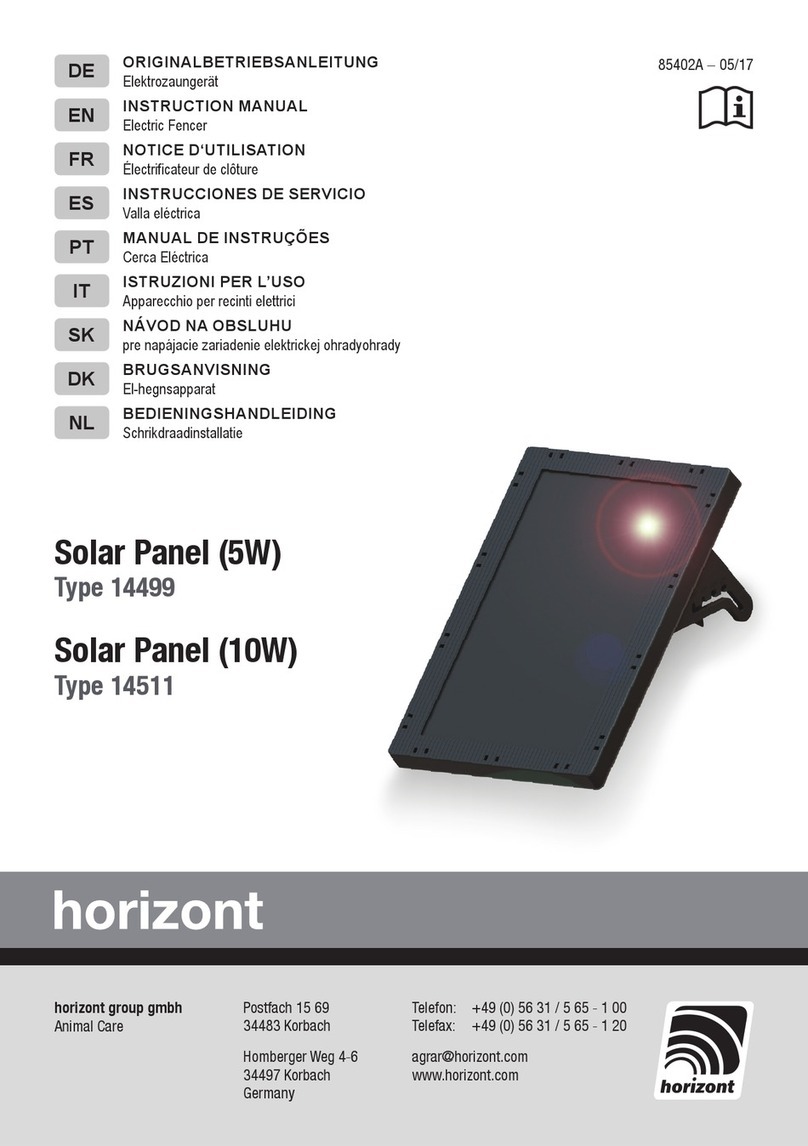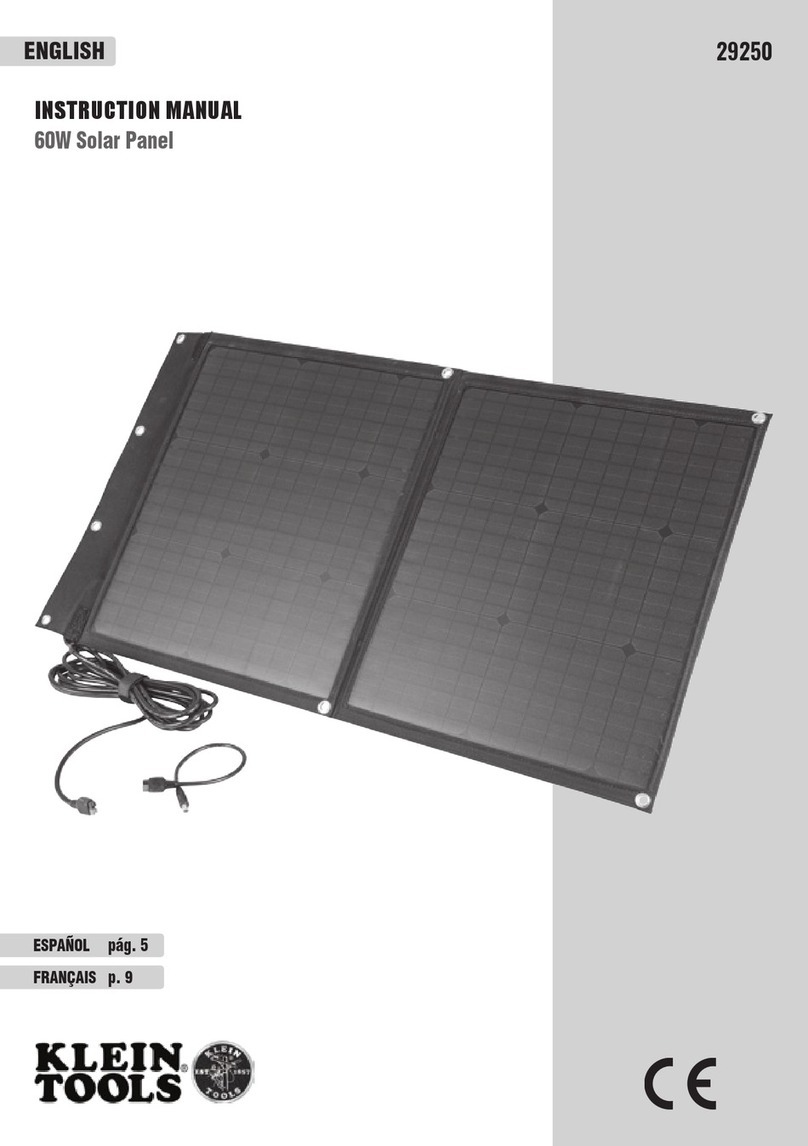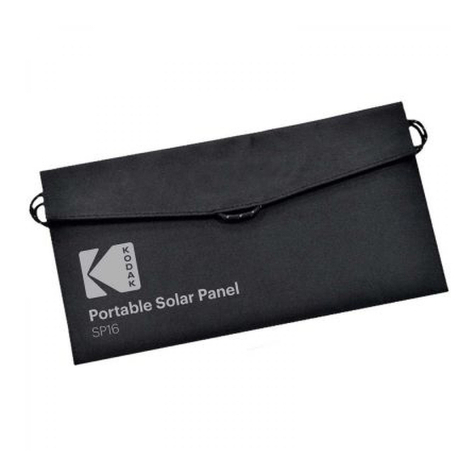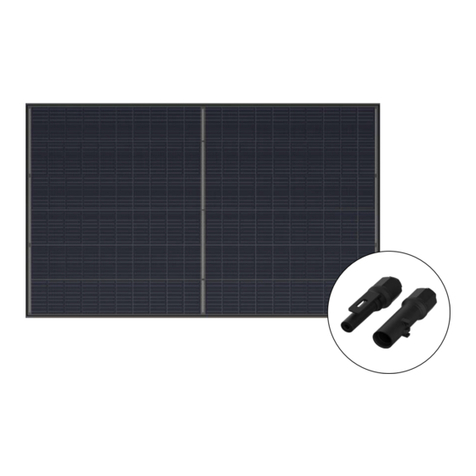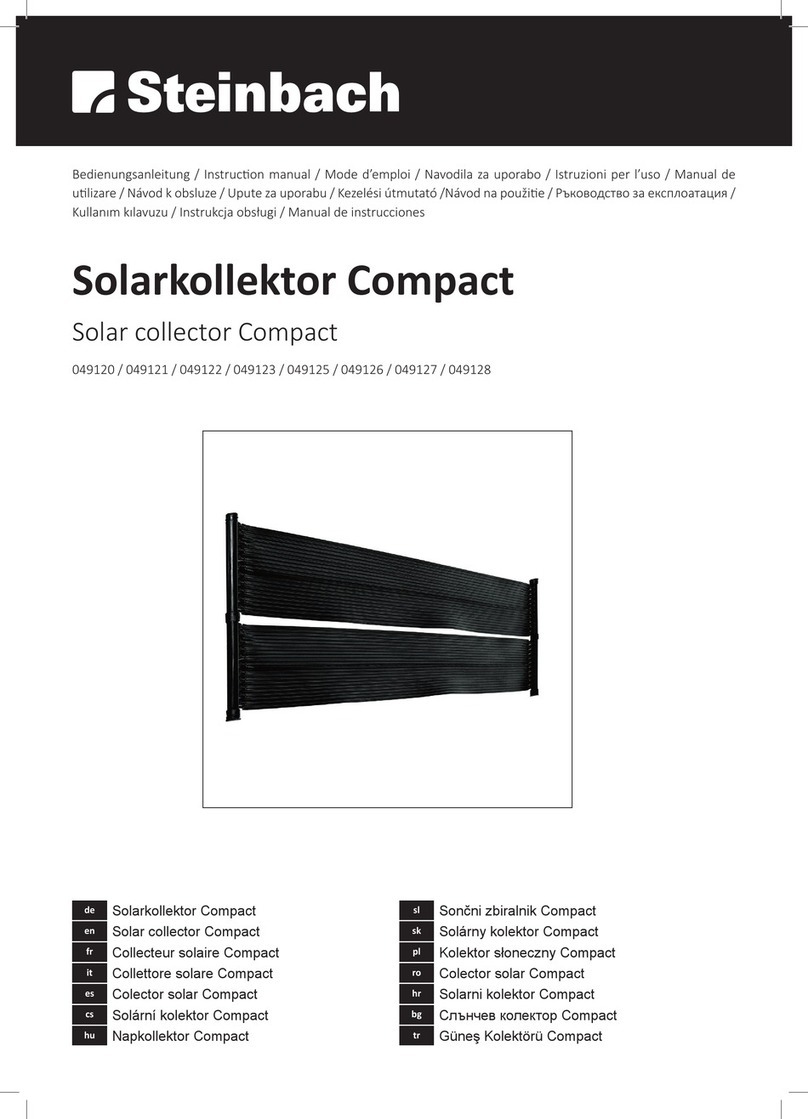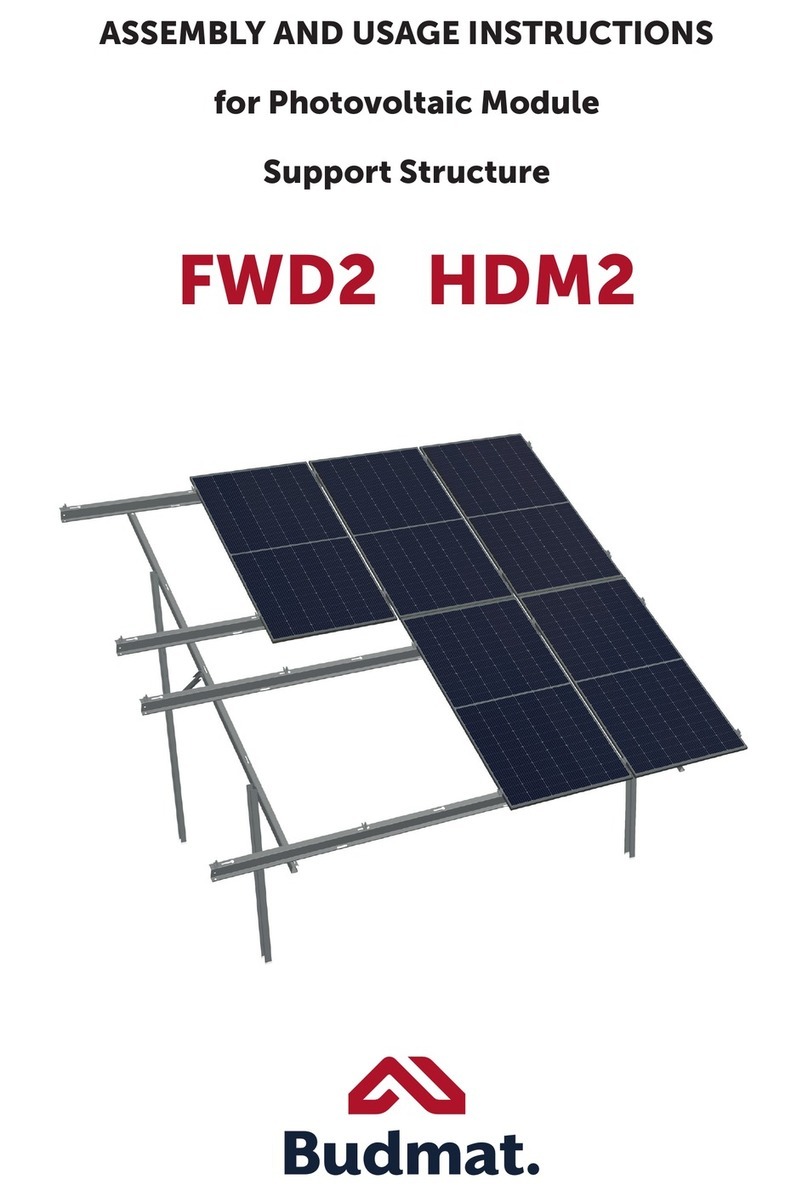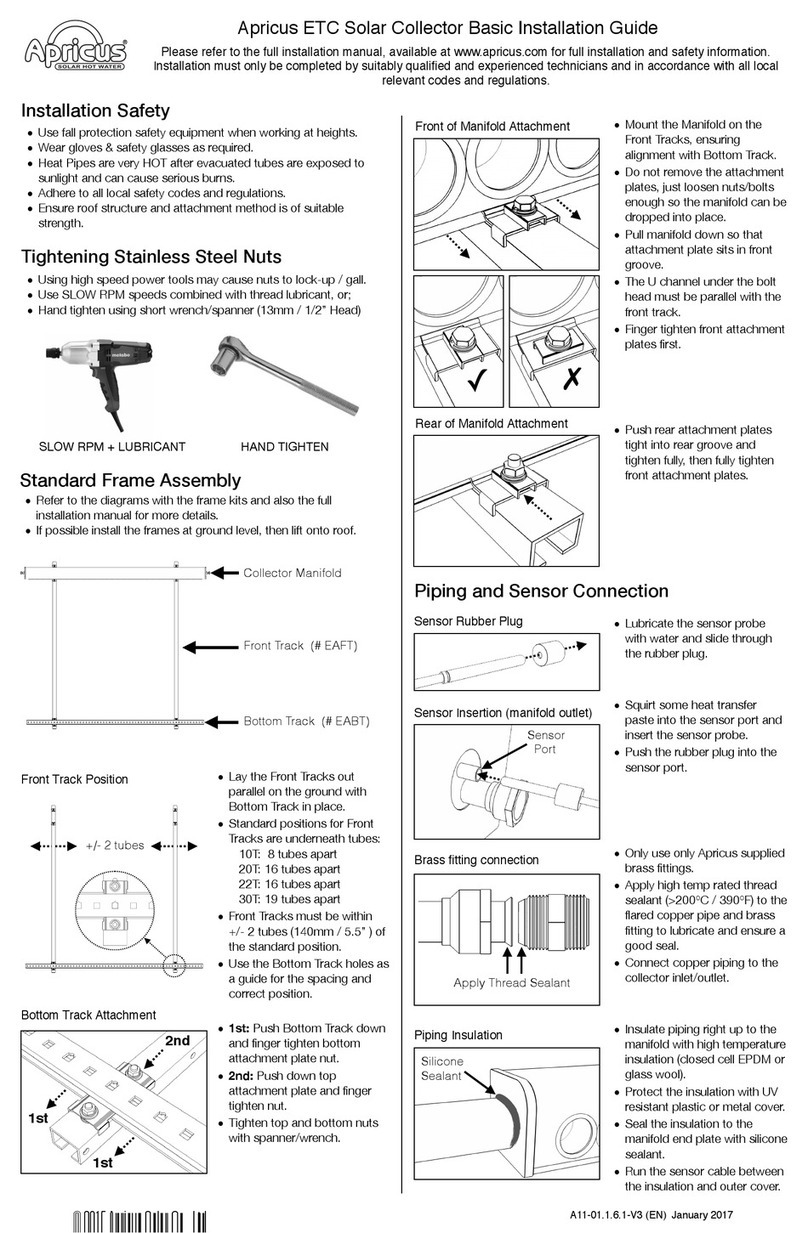Roofit.Solar ClicSeam Setup guide

» Table of Contents
Acronyms 3
Definitions 3
Introduction 4
Disclaimer of Liability 4
Safety 5
General Considerations 5
Main Precautions 6
Fire Safety 7
Fire safety switch combiner box 8
Roofit.solar Product Information 9
Illustration of the Product 9
Connectors 10
Product environment 11
Product location 11
Roof Support Structure 11
Roof Slope 12
Location of battens 12
Roofit.solar PV system planning 13
Electrical interconnection 14
Electrical connection accessories 14
Wiring Considerations 14
Series and Parallel Wiring 15
Grounding 17
Mechanical Installation 18
Accessories for installation 18
ClicSeamTM Edge Panel installation 19
Basic Installation of ClicSeamTM PV-panel and/or Regular Metal 20
ClicSeamTM Panel Connection Using Installation Plate 22
Maintenance 23
Cleaning 23
Visual inspection 23
Decommissioning and Disposal 23
Customer Support 24
Appendix 1 24
Electrical, Mechanical and Thermal Characteristics 24

ClicSeam™ Safety and Installation Manual 3
» Acronyms
AM1.5 Air Mass 1.5
BIPV Building Integrated Photovoltaics (i.e. metal integrated photovoltaics)
DC Direct Current
Imax Current at maximum power
ISC Short Circuit Current
JB Junction box
m.a.s.l. Meters above sea level
PV
Pmax
STC
Vmax
VOC
Photovoltaic
Maximum power
Standard Test Conditions (T= 25°C, Solar Irradiance = 1000 W/m2, AM = 1.5)
Voltage at maximum power
Open Circuit Voltage
» Definitions
Buyer A person or party that purchases the Product/s from
the Roofit Solar Energy OÜ.
Product/s Roofit Solar Energy OÜ BIPV (i.e. metal integrated photovoltaics)
Warranty Period The period beginning on the date of purchase of Product/s
by the Buyer
PV layer
PV system
The Photovoltaic part of the Roofit.solar Product
System composed of two or more Roofit.solar Products
combined with an inverter and other electrical
accessories.

ClicSeam™ Safety and Installation Manual 4
» Introduction
This manual contains essential information about electrical and mechanical installation
that must be followed before handling, installing and maintaining our Product. In addi-
tion, this manual contains safety information one needs to be familiar with.
» Disclaimer of Liability
All the information contained in this manual is the intellectual property of the Roofit Solar
Energy OÜ and is based on the technologies and experience acquired and accumulated
by the company. This manual does not constitute a warranty, either explicit or implicit.
Roofit Solar Energy OÜ does not assume responsibility and expressly disclaims liability
for any loss, damage, or expenses arising from or in any way related to the installation,
operation, use or maintenance of our Product. Roofit Solar Energy OÜ assumes no re-
sponsibility for any infringements of patents or other rights of third parties that may
result from the use of our Product.
Roofit Solar Energy OÜ reserves the right to make changes to the Product, the specifica-
tions, or the installation manual without prior notice. Failure to comply with the require-
ments listed in this manual will void the warranty provided by the Roofit Solar Energy OÜ.
The mechanical and electrical installation of PV systems must be carried out with all appli-
cable codes, including electrical codes, building codes and electric utility interconnection
requirements. These requirements may vary from country to country. Contact local au-
thorities for applicable regulations. The product must be installed by a qualified person.
The electrical connection must be made by a certified electrician. Planning the location of
the product on the roof should be carried out by a competent professional with experi-
ence in planning PV systems.

ClicSeam™ Safety and Installation Manual 5
» Safety
General Considerations
The distributor of our Products is required to provide this manual to the PV system
owners.
The Product is designed to meet the requirements of the IEC 61215 and IEC 61730 stand-
ards.
Perform structural analysis of the roof before installing Roofit.solar Products.
Observe all relevant laws, regulations, guidelines, and safety measures when handling
solar modules.
For your safety, do not attempt to work on a rooftop until the necessary safety precau-
tions have been identified and taken. Sufficient protective equipment (e.g., harnesses,
insulated rubber gloves and tools, etc.) is required throughout the installation process.
Roofit.solar Products can be combined with other components to form a photovoltaic
system. In this case, installation and operating instructions issued for these additional
components must be also followed.
NB! PV system generates DC electricity when exposed to light and therefore can cause
an electrical shock or burn if not handled properly. PV modules are running on voltage
higher then 30VDC and currents exceeding 30mA, thus all contacts with bare wires with-
out proper safety measures can be dangerous for health. The danger increases when
multiple Products are connected to provide higher system voltage or current levels.
Dangerous voltages can also occur at night or even when the modules are not connected
to an electrical circuit or load.
The Products can only be rendered inoperative by removing them from sunlight, or by
fully covering their front side with a fabric, cardboard, or other completely opaque mate-
rial, or by working with Products face down on a smooth, flat surface.
A PV system can produce a higher output than the rated specifications. Industry standard
ratings are made at STC. Reflection from snow or water can increase sunlight, therefore
boosting current performance and power. In addition, colder temperatures can substan-
tially increase voltage and power. This must be taken into consideration during the sys-
tem design done by a competent person experienced in PV system planning (for more
information see the section Electrical Installation).

ClicSeam™ Safety and Installation Manual 6
Main Precautions
Always follow the safety precautions listed below when dealing with Roofit.solar
Product:
•Do not keep the Product packages open outdoors until they are ready to be installed.
•Transport and store the Products in appropriate packaging in a ventilated, rainproof,
and dry location.
•Always use electrically insulated tools and gloves while working on the electrical
connection of the Product.
•Be careful with the sharp edges and corners of the Product.
•DO NOT disconnect/connect electrical connections under load.
•DO NOT install the Product in adverse conditions (rain, strong or gusty winds, wet
or frosted roof surfaces, etc.).
•DO NOT use mirrors or other magnifiers to concentrate sunlight onto the Product.
•DO NOT overbend or apply stress to the cables.
Observe the recommended cable bend radius following
the supplier’s data sheet.
•Ensure that all electrical connections are properly
secured and protected from unwanted interference.
•Before installation, make sure that all the PV4 connectors have blue dust caps on.
Remove the dust caps only prior making electrical connections.
•DO NOT lift the Product by grasping junction boxes.
•DO NOT drop the Product or drag it over any surface.
•DO NOT attempt to install or service the PV system unless you are qualified to do so.
•DO NOT attempt to open the junction box, repair, modify or disassemble the Product.
Observe bending radius

ClicSeam™ Safety and Installation Manual 7
•DO NOT leave the Product unsecured. If it falls, the glass layer could break.
The Product with a broken glass layer cannot be repaired and must not be installed.
•DO NOT apply paint or adhesive to the Product surface or attempt to remove any
markings, labels or parts attached to the Product by the manufacturer.
•DO NOT drill holes in the PV layer of the Product.
•Always mount the Product so that the junction box is unobstructed and does not carry
any of the weight of the Product.
•Avoid stepping or placing heavy load on the modules during the installation.
Doing so may cause microcracks/cracks that are invisible to human eye.
Fire Safety
Consult your local authority for guidelines and requirements for building or structural
fire safety. Roofit.solar Products have been tested according to the Fire Test in IEC 61730
Part 2 and classified as Class A. Also, Roofit.solar Products have been tested according to
CEN/TS 1187 and labelled as Broof (t2) in accordance with EN 13501-5:2016. In addition,
the metal sheet has been tested according to the EN 14782:2006 Self-supporting metal
sheet for roofing, external cladding, and internal lining. Roof constructions and installa-
tions may affect the fire safety of buildings. Improper installation may lead to hazards in
the event of a fire. Use appropriate components such as fuses and grounding connectors
as required by the local authorities.
Inform firefighters about the existence of a photo-
voltaic system in the building.
In case of fire, stay away from all elements of the PV
system, until the area is safe.

ClicSeam™ Safety and Installation Manual 8
Fire safety switch combiner box
A Combiner Box is recommended by Roofit.solar for the buildings with PV systems in
order to secure the house and the inverter(s) from unexpected overvoltage.
The Combiner Box is equipped with an
emergency disconnect mechanism that shuts
down the PV system and protects it from over-
voltage caused by the lightning strikes.
Depending on the roof specifications, the
Combiner Box is available in different sizes for
up to 3MPPTs per box.
The Combiner Box includes fireman’s switch,
which disconnects the DC power lines between
the solar modules and the inverter(s). The
device can be triggered remotely, as itis
installed inside the building with an easy access
that can be activated in case of a fire.
The maximum distance between the Combiner box and PV modules must not exceed
10 meters of cable length. Otherwise, an additional Combiner Box is required to be
installed.

ClicSeam™ Safety and Installation Manual 9
» Roofit.solar Product Information
The Roofit.solar Product is a building integrated photovoltaic (PV) product used as
a construction material placed on a roof or the facade of a building.
Illustration of the Product
View from the Front View from the Back
View from the Bottom Edge
Overlapping area
The overlapping
area is needed
to ensure water
proofing of the roof
Metal sheet
ClicSeam™ profile
[–]
[+]
Junction boxes
PV4 connectors
PV layer
PV layer
is
laminated ‘
to the
metal and consists
of solar cells
connected in series,
encapsulated and
protected with the
tempered glass layer

ClicSeam™ Safety and Installation Manual 10
Connectors
The Roofit.solar Product has three JBs containing positive and negative PV4 terminals.
The junction boxes have been designed to be electrically interconnected in series with IP67
protection grade.
Manufacturer
Type
Ambient
temperature
(°C)
Degree of
protection
Rated
voltage
(V, DC)
Rated current
(I, A)
TE Connectivity PV4-S/S1
Connector -40 to +85 °C IP67 1000 V UL 20A DC
TUV 40A DC
Bypass diodes
Each junction box contains a bypass diode wired in parallel with the PV cell strings. In
case of partial shading, the diodes bypass the current generated by the unshaded cells,
thereby limiting the Product heating and performance losses. Bypass diodes are not
overcurrent protection devices. In the event of a known or suspected diode failure,
installers or main-tenance providers should contact the supplier.
Specifications of the bypass diode
Type Rated bypass
current
Rated reverse
current
Rated
voltage
Operating
temperature
TE 2213713-1 15 A 15 A1000 VDC -40 to 115 °C

ClicSeam™ Safety and Installation Manual 11
» Product environment
Product location
Proper measures must be taken to ensure the performance and safety of the Product
when installed or operated in areas with heavy snow, extreme cold, strong wind, near
coastal areas or deserts where salt fog may manifest. The operating temperature range
of the product is between –40°C and 85°C.
The maximum altitude for the installation of a 1000 V Roofit.solar Product is 2000
m.a.s.l. For altitudes between 2001 and 3000 m.a.s.l., the system voltage must be
decreased to 600 V. Ensure the Product is not subject to wind or snow exceeding the
maximum permissible load. The maximum permissible load has been defined as 1600
Pa with an extra safety factor of 1.5 according to Swedish test institute RISE.
Roofit.solar is not responsible or liable for Products damaged during lightning. There-
fore, surge protection is recommended for Products to be installed in locations with
high probability of lightning strikes.
The Product should not be installed in locations where any type of corrosive agents
and/or flammable gases may be generated or collected.
Roof Support Structure
Ensure the installation
method and supporting
system of the roofing
materials are strong and
durable enough to install
the Product and meet its
load conditions. The
supporting system must
be installed according
to local, national, or
international standards.
Any penetration (e.g. chimney, pipes etc.) to the Roofit.solar Product must be properly
sealed to prevent leaks. Always keep the back of the Product free of foreign objects which
are not part of the sup-port structure.

ClicSeam™ Safety and Installation Manual 12
Roof Slope
For the purposes of waterproofing as well
as maintenance, it is strongly recommended
the roof is at slope of more than 10 degrees.
Location of battens
Battens serve as a support for the Product, and therefore, must be installed on the
same level and form an even surface to eliminate the possibility of damage to the
glass layer during the installation.
Roofit.solar recommends 250-300 mm gap between the horizontal battens. Ventilation
gap between the Product and the moisture barrier should be at least 50 mm.
Ensure the installation method and
supporting system of the roofing
materials are strong and durable
enough to install the Product and
meet its load conditions. The
supporting system must be
installed according to local,
national, or international standards.
Special attention must be paid to the
positioning of the battens in respect to
the installation of the Product. Each
Product has junction boxes that mustbe
placed in between the battens to
guarantee safe installation.
Junction boxes

ClicSeam™ Safety and Installation Manual 13
Roofit.solar PV system planning
The PV layer of the Roofit.solar Product must not be cut or bent.
Depending on the roof design, Roofit.solar Products can cover the whole roof or be com-
bined with regular metal roofing materials. However, all penetrating roof elements should
be surrounded by standard metal sheets.
In the case of complex geometry, shadow analysis is needed to determine the appropriate
area for the installation of the Products.

ClicSeam™ Safety and Installation Manual 14
» Electrical interconnection
Electrical connection accessories
Jumper/Extension cable
Jumper cable (1 m)
Jumper cable connects Products
electrically with each other.
Extension cable (> 1 m)
Customized length. Extension cables
are needed if the connection distance
between the modules is more than 1 m.
DC cable with PV4 male/female
connectors
DC cables are used to connect
Roofit.solar DC Strings with
the inverter.
Grounding cable
Spanner
Spanner is used for the disassembly
of connectors.
Wiring Considerations
Roofit Solar Energy OÜ recommends that all wiring is double insulated with a mini-
mum temperature rating of 110°C. All wiring should use flexible copper (Cu) conductors.
The minimum wiring sizes are determined by the applicable codes. Roofit Solar Energy OÜ
recommends a size not less than 4 mm².

ClicSeam™ Safety and Installation Manual 15
The insulation should be suitable for the type of installation method used and must meet
SKII (Safety Class II) and IEC 61730 requirements. The polarities of cables and terminals
must be matched when making the connections, failure to do so may result in damage
to the Product and to person. Ensure that all electrical connections are secure and tight.
Series and Parallel Wiring
Voltages are additive when Products are connected directly in series, and currents are
additive when the Products are connected directly in parallel. PV circuits should be
designed according to the best practice guidelines of the respective country. The maxi-
mum number of Products that can be connected in series string must be calculated in
accordance with applicable regulations so that the specified maximum system voltage
of the Products and all other electrical DC components are not exceeded in open-circuit
operation at the lowest temperature expected at the PV system location. In addition,
the maximum number of strings that can be connected in parallel cannot exceed 2
without proper protection. An overcurrent protection device is required for each series
string if more than two series strings are connected in parallel. The maximum system
voltage of the Roofit.solar Product is DC 1000V according to the safety assessments
of the IEC61730. The correction factor for the open-circuit voltage can be calculated
based on the following formula:
CVoc = 1 −β* (25ºC −Tmin),
Tmin, ºC is the lowest expected ambient temperature at the system site. β, %/°C is the
temperature coefficient of the selected Product Voc (See Appendix 1). A properly rated
overcurrent protection device must be used when the reverse current could exceed the
maximum fuse rating
of the Product.
The inverter (String
[–], String [+]), the
grounding and
extension cables
connecting the
Roofit.solar Products
should be positioned
on site (i.e. between
battens) before the
installation. Loose
cables should be
fixed to the wooden
structure with the
help of cable holder
clips.
String [–]
Jumper cables
Extension cable
String [+]
Grounding

ClicSeam™ Safety and Installation Manual 16
DO NOT group together positive, negative, and grounding cables to avoid ground fault
and short-circuit. Insulate bare DC cables and mark them accordingly for the time
between PV system and inverter installation.
Each type of the cables should be separately routed to the protective tubes and taken to
the technical room where they will later be connected to the inverter.
An example of 2 strings
NB. Roofit.solar PV system must be equipped with DC arc-fault circuit protection. DC arc-
fault circuit protection provides supplementary protection against fires that may arise
because of arcing faults in PV system components or wiring. Therefore, inverters with arc
fault circuit interrupter shall be used for the Roofit.solar PV system installation.
String + String - Grounding

ClicSeam™ Safety and Installation Manual 17
Grounding
Each PV system must be connected to the grounding cable to ensure electrical safety.
All Roofit.solar products that are assembled with each-other are galvanically
connected through the combination of the fastening clip and screw. Roofit.solar
recommends 2 grounding cables per roof, to provide the possibilityto measure ground
connection quality.
If the building has more than one type of active surface on the roof (i.e., Roofit.solar Prod-
ucts covering different sides of the roof), they can be connected in one grounding circuit
to minimize the number of grounding cables as shown in the picture. Double grounding
of the PV system is recommended even when applicable regulations, code requirements
and standards do not require any safety-related grounding.
The grounding should be initialized by screwing a self-tapping A2 or A4 stainless steel
screw, ST 4.8 according to DIN 7981C with a length between 10 mm and 16 mm. The screw
is connected to the grounding conductor on the uppermost metal sheet of the roof under
the ridge cap. The grounding is finalized by connecting the grounding conductors to the
equipotential grounding.

ClicSeam™ Safety and Installation Manual 18
» Mechanical Installation
Accessories for installation
ClicSeam™ fastening
clip
Used for fixating rows of panels
to each-other, every 300 mm
Screw 5x70 C4 WAF
For fixation of ClicSeam™
fastening clip
Cable fastening
clip
Used for fixing loose
cables to the battens
Fastening clip edge
with screw
Used for fixing the products to
the battens, screws included in
package
Silicone sealant
Silicone type ABRA M82
or equal
Supports waterproofing of
seams in all overlapping areas
Expanding sealant
tape 15 / 1-4
For waterproofing under
ClicSeam™ top profile
Attached inside each top
profile before installation
ClicSeam™ Edge panel
150 mm wide end-bent Edge
panel, standard length 2000
mm
ClicSeam™
installation plate
A start profile that is used when
the first panel-row requires
regular metal, standard length
900 mm
ClicSeam™ top
profile
A top profile is pressed
over and used for
covering fastening clips,
standard length 2000 mm

ClicSeam™ Safety and Installation Manual 19
ClicSeam™Edge panel installation
1. ClicSeam™ Eaves flashing
2. ClicSeam™ Edge panel - Standard 150 mm / Available custom made
3. Fastening clip edge
Edge panel is installed a minimum of 30 mm from the batten edge by sliding the end-
bent side under the eaves flashing. Note that fastening clips are to be mounted in each
batten with a minimum of 1 screw per clip.
When the second edge panel is installed, ensure a minimum of 150 mm overlap. Cut the
seam seam of the first edge panel in the overlapping area using a metal cutter. Add
silicone sealant in the overlapping area and press the second edge panel over the first
one.
Metal worker completes the connection between the edge panel and gable board / other
type of steel-plate installation.
≥
30 mm
1
3
2

ClicSeam™ Safety and Installation Manual 20
2
Basic installation of ClicSeam™ PV-panel and/or regular
metal
The first panel row is aligned with the eave’s edge, with a minimum of 150 mm overlap over
the eaves flashing.
ClicSeam™ panel connection
1. ClicSeam™ PV-panel 4. Expanding sealant tape 15 / 1-4
2. ClicSeam™ fastening clip 5. ClicSeam™ top profile, minimum 100 mm overlap
3. Screw for fastening clip
Step-by-step view of panel connection
1
4
5
2
Place the panels with a
gap of 5-6 mm to
ensure sufficient space
to insert the screw for
the ClicSeam™ fastening
clip.
Attach ClicSeam™
fastening clip over the
seams of the panels
every 300 mm with a
5x70 screw.
Insert expanding sealant
tape into the ClicSeam™
top profile, leaving the
overlap area clean.
Press ClicSeam™ top
profile over the seams
with the fastening clips.
3
Table of contents
Other Roofit.Solar Solar Panel manuals
Popular Solar Panel manuals by other brands
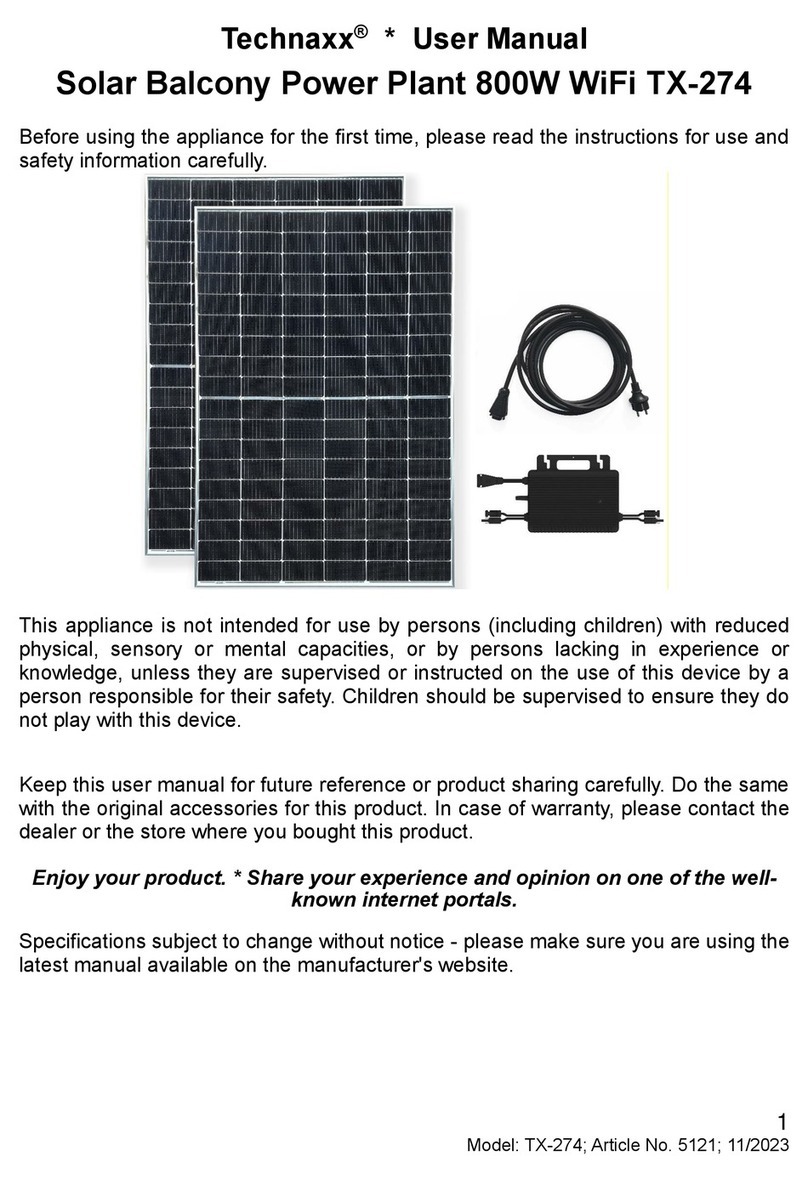
Technaxx
Technaxx TX-274 user manual

Nobel
Nobel Apollon Meander AL GRD MDR Technical manual

Viessmann
Viessmann Vitosol-F Series Installation instructions for contractors
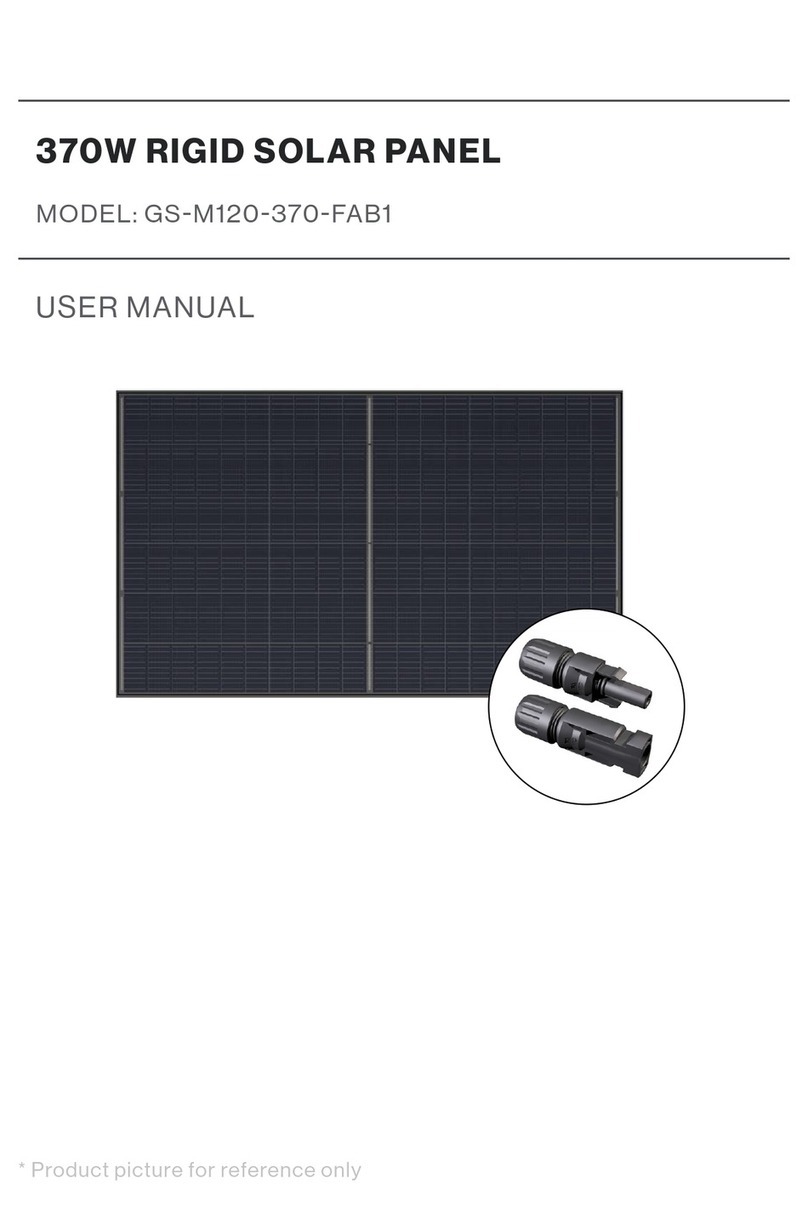
Lippert
Lippert GS-M120-370-FAB1 user manual

Viessmann
Viessmann Vitosol 200-T installation instructions
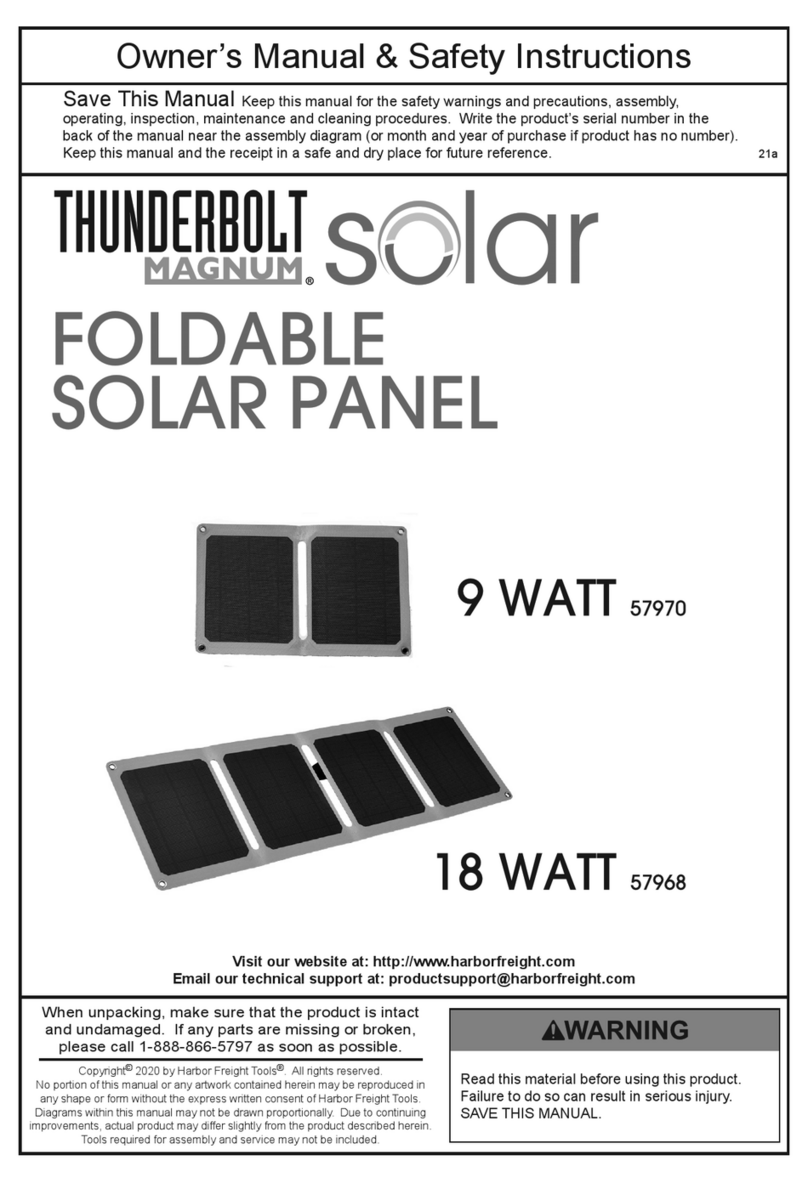
Thunderbolt Magnum Solar
Thunderbolt Magnum Solar 57970 Owner's manual & safety instructions



